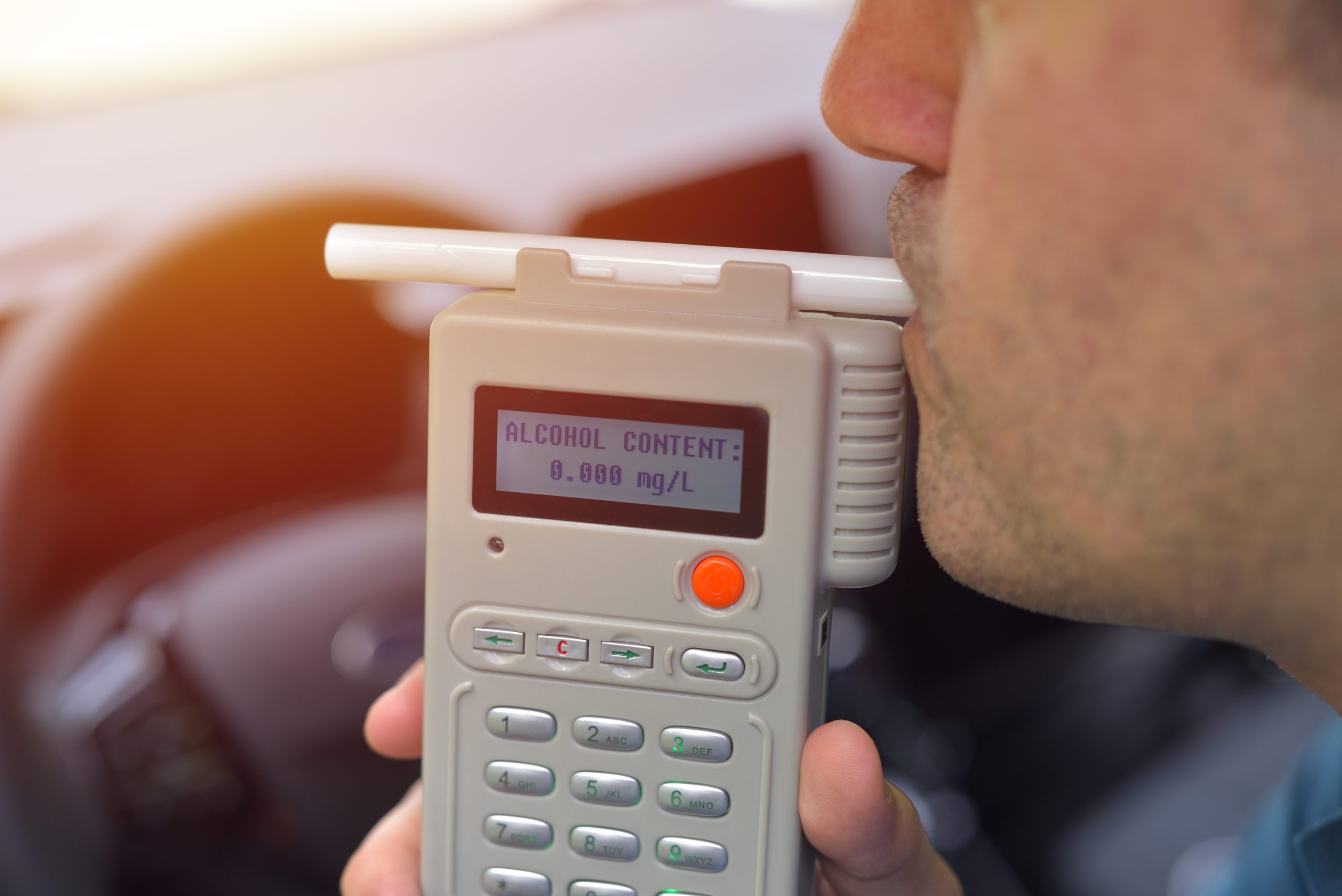Every day in South Carolina and across the country, law enforcement stops motorists on the highway for suspicion of drunk driving. Maybe you crossed the centerline, swerved within your lane, or made a too-wide turn at an intersection.
Maybe they pull you over for speeding and smell alcohol through your car window. When you get to the station, they’re going to want you to blow into a machine that magically tells them your blood alcohol content, and the result they get may determine whether your attorney can get your case dismissed or whether the prosecutor can argue to a jury that you were dead-drunk behind the wheel.
But can you trust the breathalyzer?
A comprehensive piece of investigative journalism from the NY Times is just the latest expose on why the breathalyzers in use across the country are not reliable and their results should not be admitted as evidence in courtrooms…
Why You Can’t Trust the Breathalyzer
Having a machine that tells us exactly how drunk a person is has been the holy grail for law enforcement, at least since we realized the dangers of mixing alcohol and motor vehicles.
It’s so important to law enforcement officials, legislators, and courts, that we have overlooked the flaws in these machines for decades, in many cases allowing innocent people’s lives to be interrupted and leaving them with the black mark of a DUI conviction that cannot be expunged.
Apart from the design flaws in the machines, human error in maintaining and operating the machines can cause faulty test results:
The machines are sensitive scientific instruments, and in many cases they haven’t been properly calibrated, yielding results that were at times 40 percent too high. Maintaining machines is up to police departments that sometimes have shoddy standards and lack expertise. In some cities, lab officials have used stale or home-brewed chemical solutions that warped results. In Massachusetts, officers used a machine with rats nesting inside.
The machines’ software can be flawed and yet law enforcement has ignored the advice of their own experts when purchasing the machines:
Technical experts have found serious programming mistakes in the machines’ software. States have picked devices that their own experts didn’t trust and have disabled safeguards meant to ensure the tests’ accuracy.
The NYT report may be the most comprehensive investigation yet into a problem that people do not want to see or know about:
The Times interviewed more than 100 lawyers, scientists, executives and police officers and reviewed tens of thousands of pages of court records, corporate filings, confidential emails and contracts. Together, they reveal the depth of a nationwide problem that has attracted only sporadic attention.
Even the head of National Patent Analytical Systems – the manufacturer of the Datamaster, the machine used by SC police – has said that the test is not intended to determine a person’s guilt in a courtroom:
Even some industry veterans say the machines should not be de facto arbiters of guilt. “The tests were never meant to be used that way,” said John Fusco, who ran National Patent Analytical Systems, a maker of breath-testing devices.
What have experts, judges, and courts found in other states?
Pennsylvania
Prosecutors in Pennsylvania were forced to stop using the breathalyzer:
A county judge in Pennsylvania called it “extremely questionable” whether any of his state’s breath tests could withstand serious scrutiny. In response, local prosecutors stopped using them.
Florida
A Florida court has recognized the problems with the breathalyzer:
In Florida, a panel of judges described their state’s instrument as a “magic black box” with “significant and continued anomalies.”
Florida began using the Intoxilyzer 8000 after testing showed the machine was inaccurate (see Vermont, below) and after the machine short-circuited and began to smoke during their own testing:
Florida, too, adopted the Intoxilyzer 8000, even after a test machine short-circuited and started to smoke, state records show.
A court in Orange County, Florida, found that:
“The Intoxilyzer 8000 is a magic black box assisting the prosecution in convicting citizens of DUI. A defendant is required to blow into the box. The defense has shown significant and continued anomalies in the operation of the Intoxilyzer 8000’s operation. The prosecution argues most of the tests do not show anomalies. In fact, a high percentage of the tests may show no anomalous operation. That the Intoxilyzer 8000 mostly works is an insufficient response when a citizen’s liberty is at risk.”
Massachusetts
In Massachusetts, prosecutors were forced to throw out over 36,000 breath tests due to problems with the breathalyzer:
…Massachusetts was forced to throw out their breath tests — along with more than 36,000 others — in one of the largest exclusions of forensic evidence in American history.
When defense experts tested the machines, they found that the machines were not generating error messages when they malfunctioned – instead, they printed a BAC result.
The Massachusetts forensic lab didn’t even have a procedure for setting up and testing the machines:
But the machines weren’t the only problem. The Massachusetts forensic lab, which for years had been plagued by scandals over faked drug test results and tampered evidence, lacked a written procedure to set up and test machines, the lab’s technical director testified.
And it was discovered that the lab had concealed hundreds of failed calibrations:
That was only the beginning. Lawyers soon discovered that the lab had hidden records of hundreds of failed calibrations. The discovery provoked a state investigation that blasted the lab’s leadership for “serious errors of judgment.”
As a result, breath test results from a two-year period were deemed inadmissible:
The justice hearing the case, Robert A. Brennan, said the lab could not prove that it had followed a “scientifically sound methodology,” and in 2017 he threw out all of its breath test results from 2012 through 2014.
New Jersey
The NJ Supreme Court allowed independent experts to test NJ’s breathalyzer, and they found that the machine contained “thousands of programming errors:”
But in 2007, the New Jersey Supreme Court granted a request by defense lawyers and ordered Dräger to allow outside experts to analyze the software for the Alcotest 7110 machines in use statewide. The experts said it was littered with “thousands of programming errors,” according to their report to the court.
The Court found that the machine had “mechanical and technical shortcomings” and “the potential to produce the wrong result:”
After reviewing the evidence, the court deemed the Alcotest 7110 “generally scientifically reliable.” But the state court also acknowledged the devices had “mechanical and technical shortcomings” that had the potential to produce the wrong result. Dräger said it quickly fixed the problems, but the state never rolled out the software update, court records show.
Vermont
A toxicology lab in Vermont found that the Intoxilyzer 8000 was “unsatisfactory” and “gave inaccurate results on ‘almost every test:’”
In 2005, for example, Vermont’s toxicology lab scrutinized machines from four manufacturers. The lab rated CMI’s Intoxilyzer 8000 as “unsatisfactory” and found that it gave inaccurate results on “almost every test,” according to a lab technician’s report.
The same machine is used in Florida, Mississippi, Ohio, Oregon, and possibly other states.
Washington
Washington State began using the Alcotest 9510 in 2009 even though their own expert said it was “not yet ready for implementation:”
When the State of Washington decided to spend more than $1 million to replace its aging machines in 2009, the state police chose the Alcotest 9510 despite a report by their own scientist that described the machines as “not yet ready for implementation.”
In 2015, a Washington State court ordered an independent test of the breathalyzer’s software, which found that the machine was “not a sophisticated scientific measurement instrument” and “does not adhere to even basic standards of measurement:”
The report said the Alcotest 9510 was “not a sophisticated scientific measurement instrument” and “does not adhere to even basic standards of measurement.” It described a calculation error that Mr. Walker and Mr. Momot believed could round up some results. And it found that certain safeguards had been disabled.
The expert then came under attack by the machine’s manufacturer, who threatened litigation and demanded that the expert destroy the report:
After a couple weeks dissecting the Alcotest code, they wrote a nine-page draft report, “Defective Design = Reasonable Doubt.” They planned to dig further, but things went awry when they shared their report with defense lawyers at a convention.
Dräger sent Mr. Walker a letter demanding that he and Mr. Momot ask anyone with a copy of their report to destroy it — including the lawyers who hired them — and to stay silent about the instruments’ inner workings. Facing a giant company, Mr. Walker felt he had no choice but to comply. “I am an ant,” he said.
Neither the report nor the expert ever appeared in the court that had ordered the testing…
Minnesota
Minnesota is one of several states that have disabled quality control checks on their machines due to malfunctions:
In Minnesota, for example, officials found that the fuel-cell systems in their DataMaster devices often broke down, according to court testimony. Instead of fixing the problem, technicians simply turned off that portion of the machine in 2012. The effect was to eliminate an important quality-control check — one that had been a selling point when the machines were purchased.
Colorado
When a Colorado lab technician tested breathalyzer machines before the state ordered all new Intoxilyzer 9000s, he was ordered to destroy all records of his testing and to destroy the machine’s operation manual:
Before Colorado got those machines in 2013, a lab technician, Michael Barnhill, had tested devices from a number of manufacturers. He testified in Mr. Friedlander’s case that his manager ordered him to destroy records from those tests, as well as the manual for the Intoxilyzers, in case defense lawyers tried to subpoena the materials.
But the deception didn’t stop there – lab records were faked to show that the technician had calibrated machines that he had never touched:
Mr. Barnhill said lab records were faked to show that he had calibrated dozens of instruments that he had never touched. And to speed things up, the lab’s supervisor summoned assistants, including an intern, a CMI lawyer and a sales manager, to help.
Washington DC
State law enforcement’s own testing of the Intoxilyzer in DC found that every machine was providing results that were 20-40% too high and that the machines had been miscalibrated for years:
When Ilmar Paegle was hired to run the breath-testing program for the Metropolitan Police Department in Washington, D.C., his first order of business was to test its Intoxilyzers. Mr. Paegle, a retired United States Park Police officer, was stunned: Every machine was generating results that were 20 percent to 40 percent too high.
That discovery, in 2010, most likely meant that years of faulty tests had convicted innocent drivers.
We could keep going… But, do you trust the breathalyzer?
SC DUI Defense Lawyers in Myrtle Beach
Can you trust the breathalyzer?
If you have been charged with DUI in SC, the breathalyzer results – taken on machines that have been repeatedly proven to be unreliable – may be the state’s best evidence against you.
Call Coastal Law now to schedule a free case consultation by calling (843) 488-5000 or by contacting us through our website.



